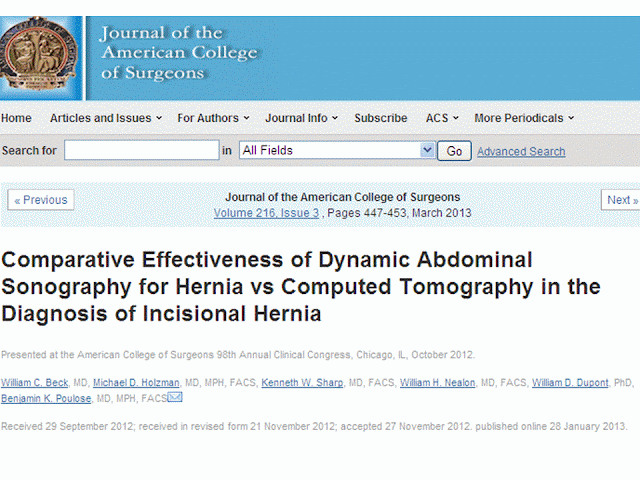www.portableultrasoundmachines.net/ultr...
There is an insidious nature to
osteoporosis. It is a gradual loss of bone tissue that is so slow that it is
usually not noticed until there is a traumatic event like a fracture. Screens
exist that can predict osteoporosis and allow treatment to begin early, and one
of the best screens is ultrasound based.
Quantitative ultrasound (QUS) measures
the speed of sound and broad band ultrasonic attenuation of the ultrasound beam
as it passes between two ultrasound transducers. QUS can become a screen that
may be predict future fractures in peri-menopausal and immediate
post-menopausal women, and senior citizens of both genders. Those who have low
QUS values for the ankle bone, the most common bone screened, are referred for
further testing, like measurements of the spine.
QUS works by measuring how the ultrasound machine beam changes as it passes through the
bone. The name for this type of ultrasound is Broad Band Ultrasonic
Attenuation, or BUA. QUS can also measure how quickly the ultrasound beam
passes through the patient’s bone; the name for this is Speed of Sound,
abbreviated as SOS.
These two readings when taken together
can tell us about how bones are structured, whether or not they are elastic,
and how strong they are—in short, measures of the quality of the bone. That can
be compared to the bone density. Taken together, these two assessments can help
doctors predict each patient’s risk of suffering a bone fracture.
The bones of the foot are used because
just like the lumbar spine, as we age these bones change. Spinal changes cause
the majority problems in patients with osteoporosis. In addition, QUS is a
simple process, the equipment is portable, and for the patient there is no
radiation exposure.
In the three-year multicenter study, 6,174 women age 70 to 85 with no previous formal diagnosis of osteoporosis were screened with heel-bone quantitative ultrasound (QUS), a diagnostic test used to assess bone density. QUS was used to calculate the stiffness index, which is an indicator of bone strength, at the heel. Researchers added in risk factors such as age, history of fractures or a recent fall to the results of the heel-bone ultrasound to develop a predictive rule to estimate the risk of fractures. The results showed that 1,464 women (23.7 percent) were considered lower risk and 4,710 (76.3 percent) were considered higher risk.
Study participants where mailed questionnaires every six months for up to 32 months to record any changes in medical conditions, including illness, changes in medications or any fracture. If a fracture had occurred, the patients were asked to specify the fracture's precise location and trauma level and to include a medical report from the physician in charge.
In the group of higher risk women, 290 (6.1 percent) developed fractures whereas only 27 (1.8 percent) of the women in the lower risk group developed fractures. Among the 66 women who developed a hip fracture, 60 (90 percent) were in the higher risk group.
The results show that heel QUS is not only effective at identifying high-risk patients who should receive further testing, but also may be helpful in identifying patients for whom further testing can be avoided.
"Heel QUS in conjunction with clinical risk factors can be used to identify a population at a very low fracture probability in which no further diagnostic evaluation may be necessary".
Studies have shown that a combination
of QUS and an inquiry about personal and familial risk factors would detect
more cases of osteoporosis and had slightly better chance to predict fractures
than the risk factors inquiry alone. It has also been discovered that
ultrasound test alone have much better predictive value than risk factors
alone. It is, however, still good clinical practice to do an overall assessment
of risk for osteoporosis rather than QUS alone.
In the three-year multicenter study, 6,174 women age 70 to 85 with no previous formal diagnosis of osteoporosis were screened with heel-bone quantitative ultrasound (QUS), a diagnostic test used to assess bone density. QUS was used to calculate the stiffness index, which is an indicator of bone strength, at the heel. Researchers added in risk factors such as age, history of fractures or a recent fall to the results of the heel-bone ultrasound to develop a predictive rule to estimate the risk of fractures. The results showed that 1,464 women (23.7 percent) were considered lower risk and 4,710 (76.3 percent) were considered higher risk.
Study participants where mailed questionnaires every six months for up to 32 months to record any changes in medical conditions, including illness, changes in medications or any fracture. If a fracture had occurred, the patients were asked to specify the fracture's precise location and trauma level and to include a medical report from the physician in charge.
In the group of higher risk women, 290 (6.1 percent) developed fractures whereas only 27 (1.8 percent) of the women in the lower risk group developed fractures. Among the 66 women who developed a hip fracture, 60 (90 percent) were in the higher risk group.
The results show that heel QUS is not only effective at identifying high-risk patients who should receive further testing, but also may be helpful in identifying patients for whom further testing can be avoided.
"Heel QUS in conjunction with clinical risk factors can be used to identify a population at a very low fracture probability in which no further diagnostic evaluation may be necessary".
Ultrasound machine scanning, therefore, is a simple,
quick, safe, portable, and inexpensive clinical test. It can provide physicians
an opportunity to improve on the current method of identifying patients at risk
for osteoporosis and the associated fractures.












